Higher purpose Higher purpose Higher purpose
Former Husky football standout Mark Pattison, ’84, raises money for charity as he pushes his mind and body to new peaks.
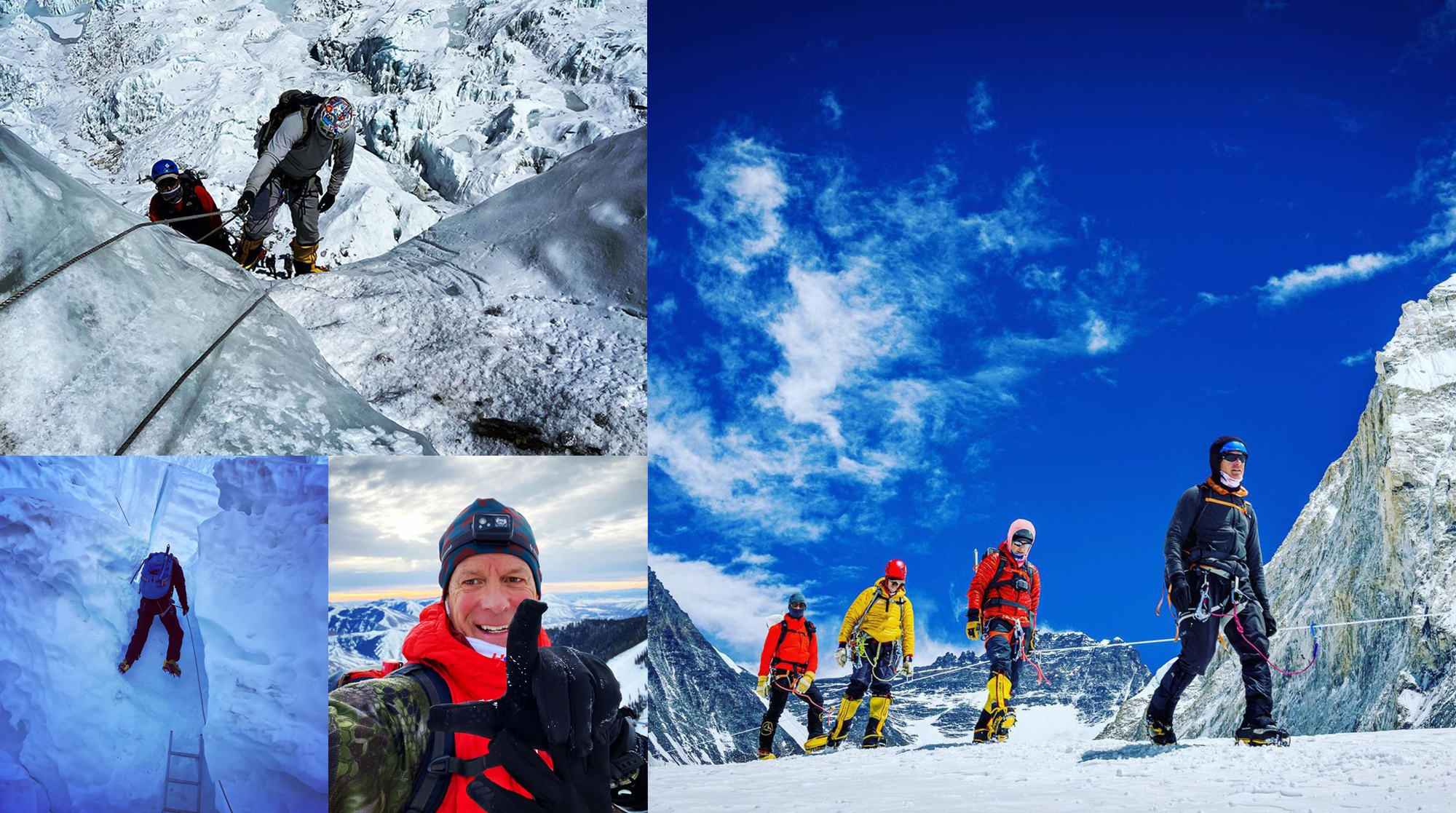
Former Husky football standout Mark Pattison, ’84, raises money for charity as he pushes his mind and body to new peaks.
Metaphorically, former Husky wide receiver Mark Pattison, ’84, has been on top of the world many times in his life. In the 1985 Orange Bowl’s stunning 28-17 victory over No. 2 Oklahoma, he caught a 12-yard touchdown pass that gave UW a four-point lead with less than six minutes left. A few months later, he was chosen by the Los Angeles Raiders in the 1985 NFL Draft. And, of course, he felt it when each of his two daughters was born. Physically, however, he’s only been there once—on May 23, 2021—which is more than most people can say.
At the end of March, Pattison and I had a Zoom call before he was due to set off for Nepal on an epic, record-making journey to become the first (and oldest, at 59) NFL player to climb the Seven Summits (the highest points on each of the seven continents) plus scale Mount Everest and Lhotse (the fourth-tallest mountain in the world) within 24 hours of each other.
“I feel great; I’m totally prepared,” Pattison told me with an excited smile. He was about to undertake a feat of athleticism, endurance, and daring that only a few dozen alpinists have ever completed. Pattison previously knocked six of the seven mountains off his list.
Pattison, who lives in Sun Valley, Idaho, was originally scheduled to attempt Everest in 2020, a climb that was delayed due to the COVID-19 pandemic. But he took the extra year to continue building his strength and stamina with a rigorous training schedule that included twice-a-day workouts, resistance-band training, and skinning—an increasingly popular practice where skiers stick synthetic sandpaper-like skins on the bottom of their skis and hike up the slopes. “Before anyone even wakes up, I’m downstairs doing CrossFit,” he says. “In the afternoons, I’ll usually climb up Baldy [Bald Mountain] or another peak around here. When you have big goals, you have to raise the bar in order to meet them.”
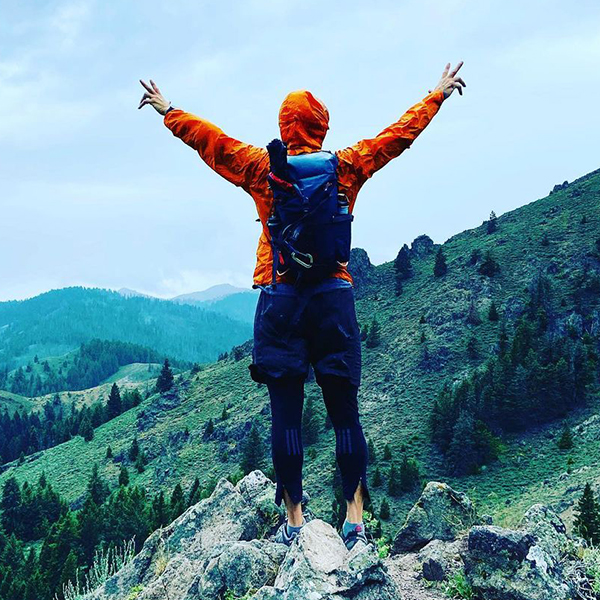
Back home in Sun Valley, Mark Pattison scales some smaller peaks after his adventure on Mount Everest.
“Coach James prepared me for moments like this. He made me go through three years of training to improve my mind, my body, and my soul.”
Mark Pattison
In Pattison’s case, the goals go beyond setting a world record. He dedicated his climb to his daughter Emilia, who has been living with epilepsy since she was 8 years old. In 2020, he raised over $29,029 (the figure is the same as the height of the summit of Everest) to build awareness for the National Epilepsy Foundation. An additional $27,940 (the height of Lhotse) was raised leading up to the 2021 climb, including donations from both the NFL and Las Vegas Raiders. All proceeds went to Higher Ground, an organization that uses recreational therapy to empower people of all abilities to achieve their highest quality of life.
“My daughter is climbing her own Everest every single day,” Pattison says. “If she can face that challenge courageously, the least I can do is also try to be courageous and have a positive effect on others.”
Like many Northwesterners, Pattison has mountains in his blood. Born and raised in Seattle, he attended Roosevelt High School and played wide receiver and quarterback for the Roughriders football team. Outside of football, Pattison liked to spend time hiking and climbing around the region. (“I’ve been on top of Tiger Mountain more than 150 times,” he says.) As a junior, the wide receiver was named the All-Metro Player of the Year by the Seattle Post-Intelligencer.
After graduation, Pattison headed a mile and a half south of Roosevelt to play wide receiver for the Husky football team at the University of Washington. A star on the high school football field, the 6-foot-2-inch, 181-pound Pattison suddenly found himself at the bottom rung of the ladder. “I can’t even tell you how far in over my head I was,” he says. “I couldn’t even bench-press my own weight. It took me three years of wallowing in that program, just chipping away every single day to really find my place.” It was both the confidence and guidance of legendary coach Don James that helped shape Pattison—both as a player and a person.
“Coach James prepared me for moments like this,” he says of his climb. “He made me go through three years of training to improve my mind, my body, and my soul. He taught me that experience matters, conditioning matters, studying matters. The hours and hours of work aren’t fun when you’re in the moment but reaching that goal or that victory makes it all worth it in the end.”
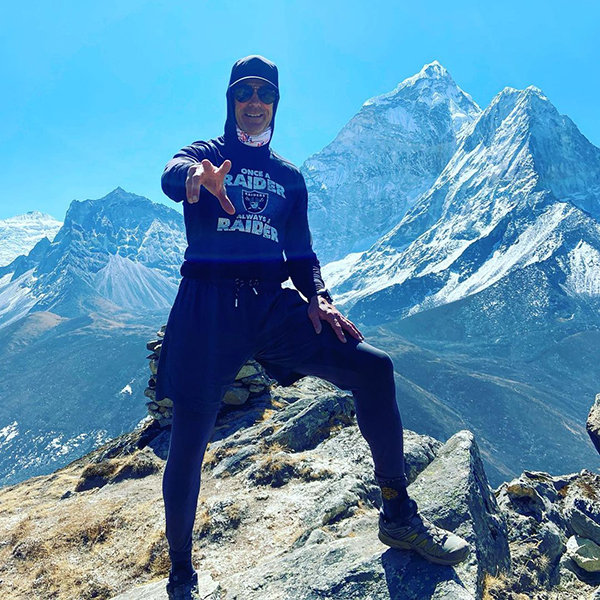
Pattison before his final push to the summit on Mount Everest.
After college, Pattison was drafted by the Los Angeles Raiders and subsequently went on to play for the Los Angeles Rams and the New Orleans Saints. Post-NFL, he went on to establish The Pattison Group, a successful branding and merchandising company (it was responsible for the ubiquitous dark-green Starbucks patio umbrellas seen outside stores); Front Porch Classics, an award-winning gaming company specializing in retro coffee-table games; and is now an executive for Sports Illustrated, among other ventures. He currently hosts a podcast, “Finding Your Summit,” which, as its tagline explains, highlights “ordinary people accomplishing extraordinary things.”
Later, Pattison and his now-ex-wife moved to California, and that’s where, he says, “the wheels started falling off.” Despite a long and arduous fight to keep their marriage together, the couple decided that it was time to separate after more than two decades together. Within months, Pattison’s father suffered a sudden stroke and died—the culmination of the two events led to some of the darkest days of Pattison’s life.
“Then one day, I just woke up and switched the question I was asking myself from, ‘How did I get here?’ to ‘What am I going to do about it?’” he recalls. “The moment that I changed my mindset was that moment when this huge weight lifted off me. I wanted to something athletically great again.”
While many athletes take up golf after retirement, Pattison turned to a favored childhood activity: climbing. Not one to shy away from extreme challenges, he decided that he was going to become the first NFL player to complete the Seven Summits, tacking on the one-two punch of Everest and Lhotse after former Steelers and Patriots defensive lineman Craig Hanneman climbed Everest in 2019. In addition to Everest, which towers 5 1/2 miles above sea level, the Seven Summits include Mount Kilimanjaro in Africa, Mount Elbrus in Europe, Mount Kosciusko in Australia, Aconcagua in South America, Denali in North America, and Mount Vinson in Antarctica.
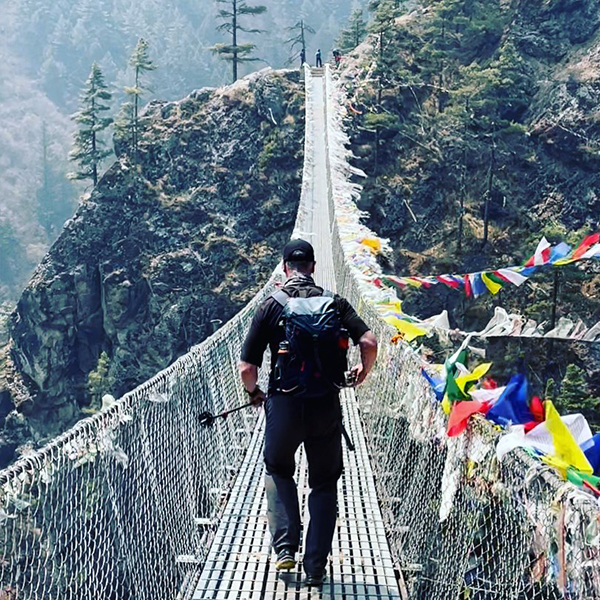
Pattison crosses a sway bridge on the way to Everest Base Camp.
Of the pre-Everest six, Pattison says that the most difficult (and punishing) was Denali, which he completed in 2018 after having to turn back the year before due to bad weather and extreme temperatures. “I remember thinking, ‘I can’t believe I have to do this all over again,’” he says. Located in the Alaska Range, Denali is one of the more challenging climbs in the world. For this reason, some alpinists tag it as a more challenging climb. Temperatures can plummet to minus-70 degrees Fahrenheit, icy winds blast in from the Bering Sea, and Pattison had to carry a 137-pound pack full of gear for the entire trip. On Everest, at least, Sherpas will help with much of the load.
Just getting to the start of the Everest climb is a journey. After flying into Kathmandu at the beginning of April (and quarantining for five days due to the still-ongoing COVID-19 pandemic), Pattison and his climbing party of 13, which included renowned high-altitude guide Garrett Madison, boarded a tiny aircraft and flew into the village of Lukla—the airport’s short, steep landing strip and short descent to landing have consistently earned it the title of the world’s most dangerous. From here the group, including local Sherpas with decades of mountain experience, trekked for 12 days, with yaks carrying their gear, through the Khumbu Valley to reach the Everest Base Camp, which sits at 17,500 feet above sea level. From there, as Pattison said, “it’s a waiting game.”
Due to a handful of factors including weather, the window for making an Everest ascent is slim—generally between May 15 and 23. Climbers spend time training on the Khumbu Icefall, an incredibly dangerous section at the head of the Khumbu Glacier that is constantly changing as the glacier moves. Deep crevasses form with little warning (climbers cross them with rope lines and aluminum ladders placed across the openings), and avalanches are a daily occurrence. During the appointed ‘window,’ climbers advance up the mountain to a series of increasingly more desolate and weather-whipped base camps. Reminders of the extreme danger of the climb are at every turn: the winds are harrowing; the oxygen is thin (most climbers use tanks of oxygen above 22,000 feet); and detritus from past climbs, as well as the bodies of those who died attempting the ascent, can be seen along the way.
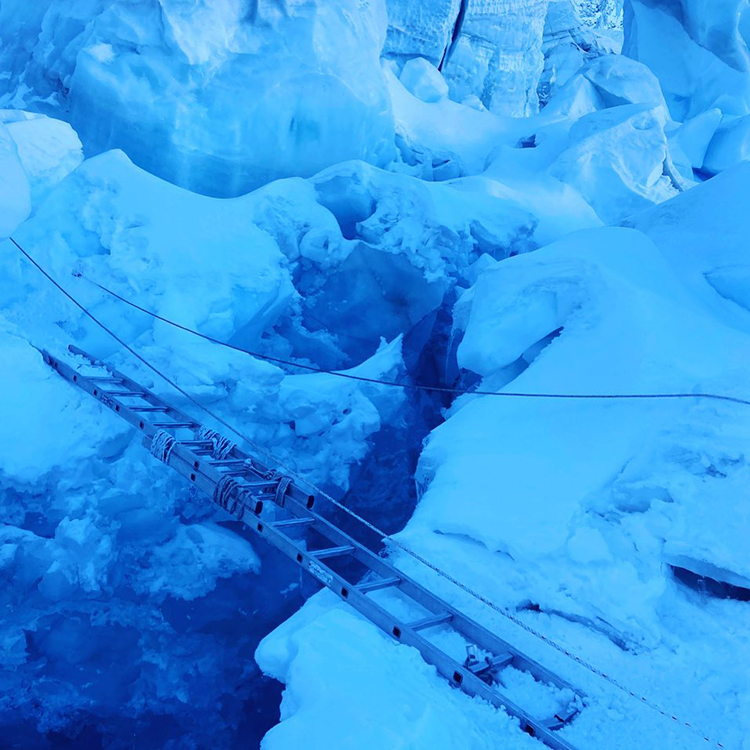
Pattison crossed a deep crevasse using this ladder on Mount Everest.
“I kept thinking about my daughter Emilia and how she never quits in her battle with epilepsy. If she doesn’t quit, then I couldn’t quit either.”
Mark Pattison
For Pattison, summit day was the most athletically challenging day of his life. At 12:30 a.m. on May 23, he and the 10 other climbers in his group broke camp and headed for the final push. They were running behind schedule and Pattison admits that in the mad rush to pack up and head out, he did not eat enough to properly sustain him during the final climb. As the climbers headed out, a strong west wind was blowing at 40 miles per hour, and small ice crystals were slashing at the climbers’ faces. About an hour out of camp, an ice crystal slashed Pattison’s left eye and he became snow blind. Additionally, there was a communication breakdown between him and his Sherpa, who didn’t speak much English.
“I was absolutely exhausted, and I felt very alone at times,” Pattison told me on Zoom call about three weeks after the climb. “It was the worst day of climbing I’ve ever had in terms of my energy. But I just kept going back to why I did this in the first place. I kept thinking about my daughter Emilia and how she never quits in her battle with epilepsy. If she doesn’t quit, then I couldn’t quit either.”
At 10:10 a.m., local Nepalese time, Pattison and his group reached the summit of Mount Everest. He says that while it was incredible and awe-inspiring, he mostly just wanted to lay down and sleep. “I kept thinking, now I have to climb back down,” he admits. That journey presented its own set of challenges, including running out of oxygen partway through the descent (he spent that night in his tent, still without oxygen, and experienced hallucinations). By the time he returned to base camp four, Pattison knew that trying to climb Lhotse within 24 (his goal for the trip) would be unwise and potentially fatal.
“I knew that if I made the attempt that I would likely end up on that mountain permanently,” he says, “so I celebrate my original goal of completing the Seven Summits challenge. I’ve learned that setting big goals and going after them can be fulfilling in so many ways. I’ve actually conquered nine mountains in nine years, and I can’t really tell you much about the summits, but I can tell you all about the journey that led up to each one of them.”
So, where does one go after reaching the top? For Pattison, it’s not a time to sit back and relax. At the end of our first interview, he pulled out something he’d worked on in his tent on Aconcagua in Argentina in 2015 and held it up to his computer’s camera. It was a hand-written list of sorts with circled words, lines connecting things, jotted-down phrases—as complex and layered as the hopes and ambitions we all have for ourselves. Ideas such as writing a book or climbing the tallest peak in every single state in America. In short, Mark Pattison is not the kind of person who will ever stop making big goals and reaching them.
“I feel like the game has just started for me,” he says leaning back with a huge smile. “I’ve got a whole bucket list of things just waiting to go.”
Pictured at top: Images from Pattison’s climb of Mount Everest, including scaling treacherous icefalls (top right and bottom right).
In September 2021, the NFL, which sent film crews to Nepal along with Pattison, will be releasing a documentary about his training and summit of Mount Everest.